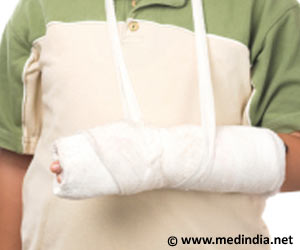
‘Sensors in bandages detect biomarkers like pyocyanin, nitric oxide, and uric acid, which can track the healing of ulcers, sores, and other chronic skin wounds like diabetic foot ulcers or pressure ulcers.’
Read More..Tweet it Now
Chronic wounds like diabetic foot ulcers or pressure ulcers heal slowly and can be difficult to manage for healthcare professionals and patients. Doctors and nurses have to remove the bandages covering the wound to monitor the healing process and determine the treatment options.Read More..
This often hurts the patient and results in damage to the recovering wound, hospital visits for other bandages, and to avoid further infections. Certain wounds require visual inspection and further tests like tissue biopsies, surface swabs, or testing for pathogens are needed which are costly and invasive procedures. These procedures take many days and can fail to produce useful treatment directions.
Wearable sensors monitor certain biomarkers during the healing process.
In the new study, the Russia-US team, led by Skoltech provost, Professor Keith Stevenson, explored various electroanalytical methods that show promising clinical applications because of their relative simplicity, sensitivity, durability, and other attractive characteristics.
Stevenson said, “ Earlier stages of our research involved characterizing the sensor performance and demonstrating the sensitive and selective multianalyte detection in complex biofluid simulants that closely mimic real biological environments.”
Advertisement
All these biomarkers respond to electrical activity and hence can be detected by the sensor.
Advertisement
The sensors were also tested in cell cultures where it successfully detected pyocyanin from P.aeruginosa, nitric oxide from macrophages (immune cells that destroy bacteria). The sensor was also able to detect the suppression of pyocyanin produced by the bacteria due to silver, which is an antimicrobial agent.
Professor Keith Stevenson said, "The next step is to utilize this sensor technology for in vivo studies and real-time monitoring of wound treatment effectiveness on human subjects in clinical settings”
Source-Medindia










